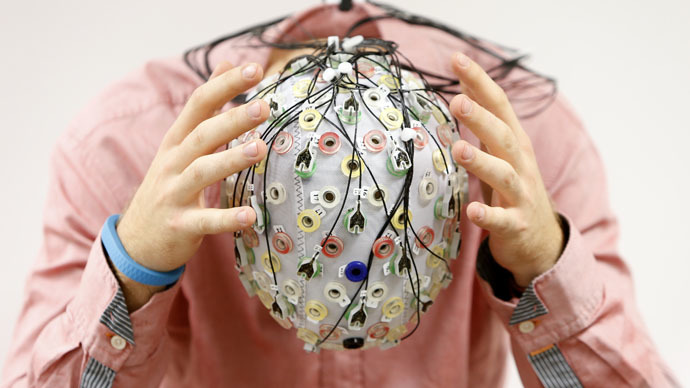Uploading human brain for eternal life is possible – Cambridge neuroscientist

People could “live inside a machine” by turning their brain into a program code once a computer capable of recreating some 100 trillion connections is built, a popular Cambridge neuroscientist said at a UK mass event this weekend.
“People could probably live inside a machine. Potentially, I think it is definitely a possibility,” Dr Hannah Critchlow of the Cambridge Neuroscience said at the popular Hay Festival in Wales, as quoted by The Telegraph.
Although the human brain is enormously complex, scientists are beginning to better understand its separate parts’ functions, Critchlow said, describing the brain as a complex circuit board. The scientist claimed it “would be possible” to recreate it as a computer program: “If you had a computer that could make those 100 trillion circuit connections – then that circuit is what makes us us.”
READ MORE: 'Big question' in neuroscience may be answered after GPS-like brain mapping
“We are about 100 billion nerve cells and the most complicated circuit board you could image,” the neuroscientist, who produces and presents brainy interactive experiences for the public and has been named among the UK’s Top 100 scientists by the Science Council, told the audience.
She also debunked a common myth that humans only use some 10 percent of their brain, explaining the whole thing is constantly running in idle mode to save energy and certain areas are only powered up when needed. She noted that despite only weighing about 1.5 kilos and taking up just two percent of the body’s mass, the brain “takes about 20 percent of all energy consumption.”
READ MORE: Mild electric brain stimulation boosts creativity, may tackle depression
The neuroscientist confirmed that the brain’s right and left hemispheres are different, and that there is some evidence to support the belief that left-handed people are more creative.
It is known that the right hemisphere of the brain, which is more active in left-handed people, is linked to creativity. Recent studies have shown that creative thought can be externally improved by special devices stimulating that part of the brain. It is now possible to buy hats containing electrodes to stimulate the area for around $80, the scientist said.












